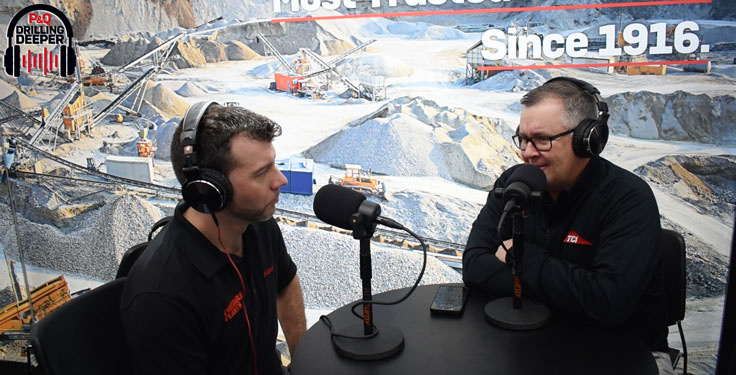The state of the industry: A state-by-state report
The heads of nine industry state associations weigh in on infrastructure funding, the Mine Safety & Health Administration and other issues affecting their state.
NEW YORK
Dave Hamling, president and CEO, New York Construction Materials Association
The state of the industry within New York in a word or two: Busy in 2018
His outlook for 2019: Somewhat pessimistic
Factors driving his 2019 outlook: Infrastructure funding, the regulatory environment
On how New York is situated with infrastructure funds for 2019 and in the years to come: Poorly situated. New York is losing road/bridge infrastructure funding to transit, and the New York State Department of Transportation five-year plan ends [this] year.
On what should be done to enhance the relationship between aggregate producers and the Mine Safety & Health Administration (MSHA): Reinstating the compliance assistance visit program and shifting the agency’s focus from enforcement to compliance will greatly improve conditions.
Other comments on the state of the industry in New York: A new generation of environmental regulation has created challenges for the industry and association. “Regulating to the exception” seems to be the mantra of environmental agencies, resulting in rules that are punitive to producers that are meeting or exceeding environmental standards.
KENTUCKY
Nick Rodgers, executive director, Kentucky Crushed Stone Association

Rodgers
The state of the industry within Kentucky in a word or two: Fair, but lots of potential
Factors driving his 2019 outlook: Good economic growth with new and existing businesses expanding. Also, a potential highway bill could pass in the 2019 legislative session.
Greatest opportunities available to aggregate producers in Kentucky: The Kentucky Transportation Cabinet is geared up to rehab, repair or replace more than 1,000 bridges in Kentucky. Economic development continues to be strong in Kentucky because of lower taxes.
Greatest challenges facing producers in Kentucky: State and federal funding not being increased to support our transportation network.
On how Kentucky is situated with infrastructure funds for 2019 and in the years to come: Well situated. There will be another infrastructure bill in the 2019 legislative session. The bill will provide long-term funding for Kentucky’s roads, airports, river ports and railroads.
NORTH CAROLINA
Jasper Stem, executive director, North Carolina Aggregates Association

Stem
The state of the industry within North Carolina in a word or two: Growing
His outlook for 2019: Extremely optimistic
Factors driving his 2019 outlook: North Carolina Department of Transportation (NCDOT) project lettings, a strong economy and hurricane recovery
On how North Carolina is situated with infrastructure funds for 2019 and in the years to come: Well situated, although I’m not sure how the costs of the repairs from the two hurricanes will affect the NCDOT maintenance budget.
On the likelihood of a multi-year federal infrastructure bill passing by this summer: Not sure. Let’s hope so, but I’m not sure with the current gridlock in Washington.
GEORGIA
Jeff Wansley, executive director, Georgia Construction Aggregate Association
The state of the industry within Georgia in a word or two: Very busy
His outlook for 2019: Extremely optimistic
Factors driving his outlook for 2019: Highway funding in Georgia
Greatest challenge facing aggregate producers in Georgia: The workforce
Other comments on the state of the industry in Georgia: It’s a good state to currently be doing business in. A good government is in charge.
MISSOURI
Morgan Mundell, executive manager, Missouri Limestone Producers Association

Mundell
The state of the industry within Missouri in a word or two: Flat but stable
His outlook for 2019: Somewhat optimistic
Factors driving his 2019 outlook: On Nov. 6, Missouri voters [voted] on Proposition D, which would generate an additional $400 million for highway funding. (Editors’ note: Missouri voters unfortunately rejected this measure.)
On how Missouri is situated with infrastructure funds for 2019 and in the years to come: It has been 20 years since the gas tax was raised in the 1990s. When it originally passed, the gas tax generated 17 cents per gallon. In today’s dollars, that equals 7 cents.
On what should be done to enhance the relationship between aggregate producers and MSHA: Better communication and consistent enforcement across different areas.
KANSAS
Jerry Younger, managing director, Kansas Aggregate Producers Association

Younger
The state of the industry within Kansas in a word or two: Just OK
His outlook for 2019: Somewhat optimistic
Factors driving his 2019 outlook: Serious discussions about developing a new state transportation program have begun around the state.
Greatest opportunities available to aggregate producers in Kansas: There are pockets of increased residential, commercial and industrial construction throughout the state.
On how Kansas is situated with infrastructure funds for 2019 and in the years to come: Poorly situated. The current status is not good but attempts to correct are underway.
OKLAHOMA
Jim Rodriguez, executive director, Oklahoma Aggregates Association

Rodriguez
The state of the industry within Oklahoma in a word or two: Growing steadily
On how Oklahoma is situated with infrastructure funds for 2019 and in the years to come: Well situated, but there are some challenges. We could see slower growth in public infrastructure spending.
On what should be done to enhance the relationship between aggregate producers and MSHA: More industry/agency communication
On the likelihood of a multi-year federal infrastructure bill passing by this summer: It looks like infrastructure is headed for the queue after the midterms, regardless of which party controls the House. (Editors’ note: Democrats took control of the House at the 2018 midterm elections.)
Other comments on the state of the industry in Oklahoma: Frac sand mining is growing in Oklahoma. This is helping the economy of western and northwestern Oklahoma.
CALIFORNIA
Gary Hambly, president and CEO, California Construction & Industrial Minerals Association

Hambly
The state of the industry within California in a word or two: Steadily improving
His outlook for 2019: Somewhat optimistic
Factors driving his 2019 outlook: Defeat of Proposition 6 so we can maintain new $5 billion [in] annual transportation funding. (Editors’ note: California voters fortunately defeated this measure in November.)
Greatest challenges facing aggregate producers in California: The repeal of transportation funding, a pullback in residential construction.
On what should be done to enhance the relationship between aggregate producers and MSHA: Improved communication.
WASHINGTON
Bruce Chattin, executive director, Washington Aggregates & Concrete Association
The state of the industry within your state in a word or two: Healthy yet fragile long term
Factors driving his 2019 outlook: A strong Northwest economy, tech companies in Puget Sound, and $33 billion of infrastructure in the next five years is forecasted.
Greatest opportunities available to aggregate producers in Washington: Equipment and technology investments in their operations.
On how MSHA is performing under Assistant Secretary David Zatezalo compared with how it performed under Assistant Secretary Joe Main: There seems to be a better strategy and focus along with clear objectives, but there’s still poor agency rulemaking.
Other comments on the state of the industry in Washington: The population is booming and consumption is increasing. The permit process at the state and local levels do not recognize the need for new sources of supply.












